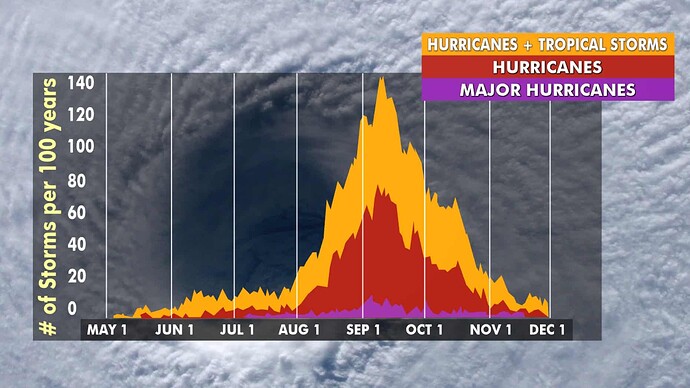It’s hard to think about a second wave of covid-19 infections when countries are still wrestling with Wave 1. We don’t even know if one will occur.
But history shows it’s a possibility we have to be on guard for. The Great Influenza of 1918 had three waves, with the second being by far the deadliest.
If covid-19 turns out to indeed have a second wave, will it be more deadly, too? No way to know at this time. But again, that’s a potential outcome we need to be aware of.
Yet one other important question we don’t have the answer (yet) to: If a second wave does occur, what would happen if the timing coincides with another crisis?
This question is timely, as most predictable natural disasters tend to happen in the second half of the year. And we’re entering that period now.
The east coast’s hurricane season runs June 1 through November 30. Already there have been four named storms (out of 13 to 19 predicted), and more hurricanes than normal are expected this year. Peak activity should happen between late August and early October:
In the west, fires have been getting worse for years; and this year’s season is predicted to be “above normal”:<img class=“aligncenter size-medium” src=“https://peakprosperity.com/wp-content/uploads/2021/09/month1_outlook-2.png” alt="“July 2020 US fire danger map” width=“1056” height=“816” />
And if Wave 2 were to hit in late winter/early Spring 2021, these are the US regions at greatest risk of experiencing floods during that time:
So, what would happen if a covid-19 Wave 2 requiring a serious lockdown gets disrupted by one or more of these natural disasters? Where hundreds of thousands to millions of people suddenly have to evacuate to parts unknown when a health quarantine is supposed to be in place?
The short answer is: Nothing good.
Evacuees will have to jettison much of their covid defense preparations in the scramble. And hygiene discipline around social distancing/etc will likely be seriously compromised as so many weary families arrive at locations unprepared for them. It’s hard to imagine how infections won’t skyrocket.
Ugh.
While there’s no way to predict with certainty when or even if this will happen, we can improve our individual odds for safety by planning today for such an outcome.
First, identify your bug-out destination should you be forced to relocate under these conditions. Contact the folks there now and game-plan with them what would happen if you had to show up there during a Wave 2. Would they be willing to welcome you? What would the pre-arranged safety protocols be while you stayed there? What resources would they depend on you to bring with you?
Second, prepare your bug-out checklist and make sure you maintain all needed supplies in reserve should you need to leave home in a hurry. If low, head out now to fill any gaps.
And third, make sure you’re as prepared as possible for successfully dealing with a second covid-19 wave.
A growing chorus of readers have been asking my co-founder Chris Martenson and me for a covid-19 Wave 2 prep guide that builds upon the recommendations made in the earlier guides we published back in February and March. Now that we’ve been through Wave 1, what new preparations would we emphasize?
Given the high degree of reader interest as well as our strong belief that the time to prepare for adversity is well before it arrives, we’ve just compiled our critical insights.
In Part 2: The Covid-19 Wave 2 Preparation Guide, Chris and I put on our Monday Morning quarterback helmets and reveal what we assess are the most important Wave 1 lessons to bring with us in anticipation of Wave 2.
Treatment protocols, meds, key supplies, food, money, social strategies – we detail out what everyone now needs to integrate into their future covid planning. The prudent move here is to hope for the best but prepare for the worst.
Click here to read Part 2 of this report (free executive summary, enrollment required for full access).
This is a companion discussion topic for the original entry at https://peakprosperity.com/what-if-a-covid-19-wave-2-happens-during-a-natural-disaster/


